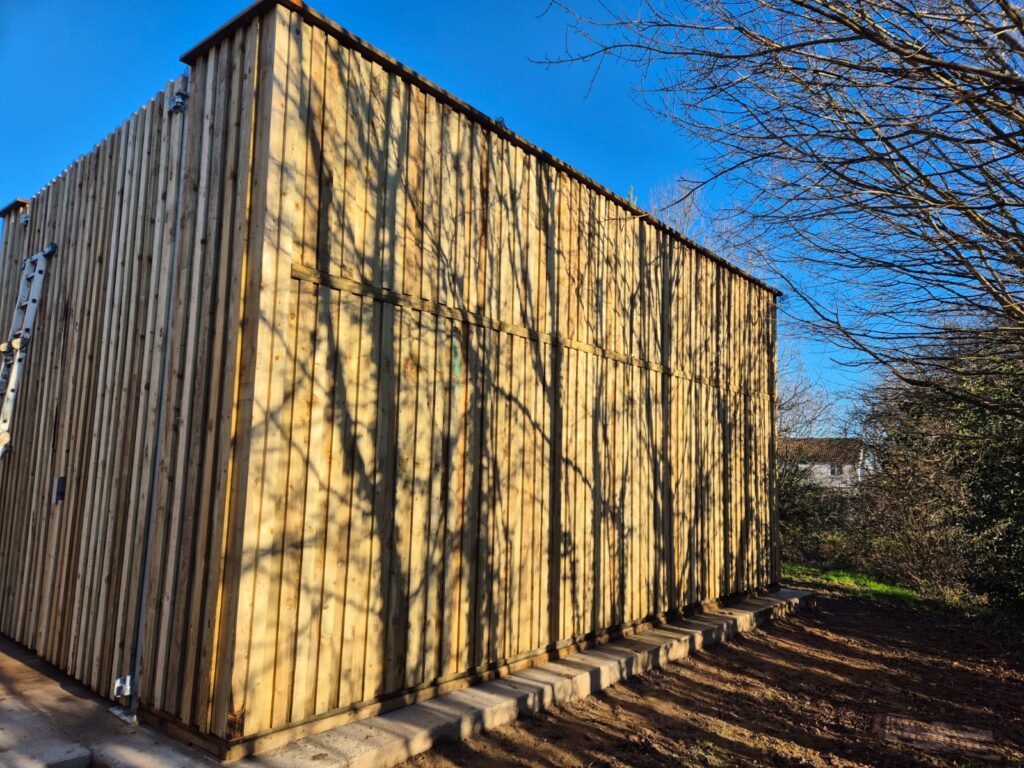How Obstacles in a Room Affect Sound
When a sound wave meets an obstacle, some of the sound is reflected back from the front surface and some of the sound passes into the obstacle material, where it is absorbed or transmitted through the material. Reflection and absorption are dependent on the wavelength of the sound. The percentage of the sound transmitted through an obstacle depends on how much sound is reflected and how much is absorbed. We are assuming that the obstacle is relatively large, such that no sound passes around the edges.
Questions you may have include:
- What happens in reflection?
- What causes absorption?
- How is the transmitted amount calculated?
Sound reflection
When a sound wave in air reaches the surface of another material, some of the sound is reflected off the surface, while the rest of it goes into the material. For example, when sound hits a wall, some is reflected and some passes into the wall.
Smooth or rough surfaces
If the surface that the sound wave hits is relatively smooth, more sound will be reflected than if the surface is rough. For example, more sound will be reflected from a smooth wall made of mud than a pile of dirt. The reason is that the rough or porous surface allows for many internal reflections, resulting in more absorption and less reflection.
Echoes
When sound reflects off a smooth flat surface, an echo or reproduction of the sound can be heard. Echoes are more noticeable if the surface is far enough away to allow for a time-lag between when the sound is made and when it is hear.
Internal reflections
Some sound is also reflected at an internal interface. For example, some of the sound in air that hits a wall will be reflected by the air to wall surface. But of the sound that is transmitted through the wall, some will also be reflected internally at the wall to air surface. Often that reflection is not considered, but it is a factor.
Transmission
When a sound wave enters another medium, there is transmission of the wave in the medium. A sound wave in air can be transmitted through a wall in a house. Or sound can enter water and be transmitted in the liquid.
Sound absorption
As sound travels though any medium, there is some loss due to absorption. Since sound is a regular vibration of the atoms or molecules in a material, some of the kinetic energy of the waveform is lost due to molecular collisions. That sound energy is turned into random heat energy.
Sound absorption in air
The volume of sound travelling though air not only becomes less as it spreads out, but some of its energy is lost due to absorption. The rate of loss is a function of the frequency or pitch of the sound.
For example, if you yelled as loud as you could, someone 1 mile or 1.6 kilometres away probably could not hear you, even under the best of conditions. On the other hand, an Elephant can make a low pitched rumble that can be heard by other elephants about 5 miles or 8 kilometres away.
Different materials
Some materials absorb sound more than others. Drapes and ceiling tiles are used to absorb unwanted sound and eliminate echoes. Music recording studios use sound absorbing materials on their walls to eliminate any undesired or outside sounds, when recording a song.
Measuring transmission
If you know how much sound is reflected at the surface of the obstacle and how much is absorbed within the obstacle, you can determine how much is transmitted through the obstacle.
Reflected
For example, suppose someone is playing music in the next room, and the volume is at 100%. The wall will reflect all frequencies almost the same. Let’s say 30% is reflected. That means that sound goes into the wall at 70% the original volume.
Absorption of high frequencies
Now suppose the material in the wall absorbs 80% of the middle and high frequencies. That means that 20% of the volume passes through the wall. Therefore you would hear a volume of 14%. That is 70% going into the wall times 20% of that coming out = 0.7 X 0.2 = 0.14 = 14%.
Absorption of low frequencies
Supposing only 30% of the volume of low frequencies is absorbed. That means 70% passes though, resulting in a volume of 49% of the original sound for the low frequencies (0.7 X 0.7 = 0.49 = 49%).
Internal reflection
Before the sound leaves the wall, some of it is reflected at the wall to air surface or interface. Typically, the internal reflection is less than the reflection from the air to the wall. Let’s say the internal reflection is 10% for all wavelengths.
Thus for middle and high frequencies, 12.6% of the sound passes through the wall (0.9 X 0.14) and 42.1% of the sound at the low frequencies passes through (0.9 X 0.49).
Sounds you hear
That is why you barely hear the higher notes of the music, but you can hear the boom-boom-boom of the bass sounds.
Summary
Sound is externally reflected, absorbed, transmitted, and internally reflected when the sound wave encounters an obstacle. Reflection and absorption are dependent on the wavelength of the sound. The percentage of the sound transmitted through an obstacle depends on how much sound is reflected and how much is absorbed.



